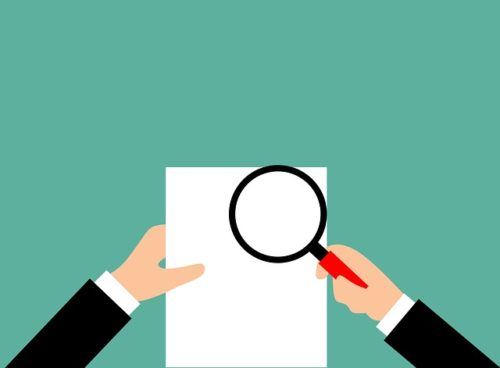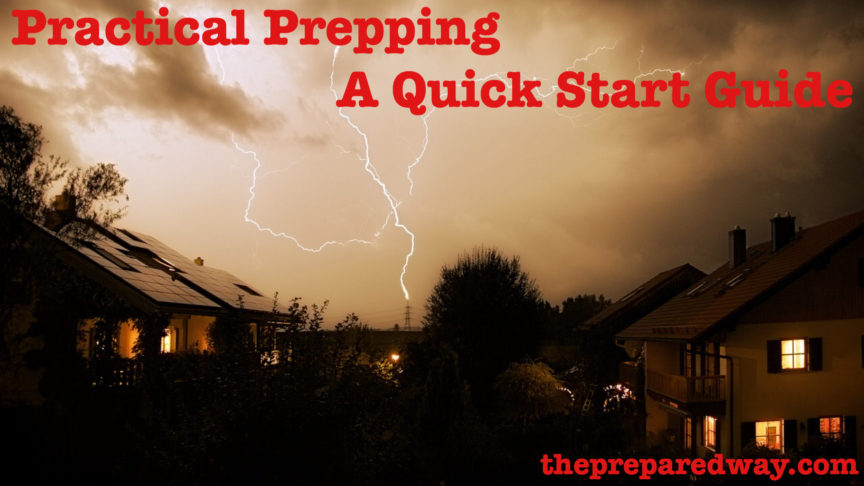So you’ve been watching the news lately and you have seen the craziness that’s going on in the world, hurricanes, wildfires, social and political unrest or maybe you’ve had an experience of your own and felt ill-equipped to handle what you have or may have to deal with in the future.
Now that you have decided to take on the responsibility of protecting you and/or your family, you are starting down the path of preparedness, personal improvement, and individual freedom. Why do I add individual freedom? Once you start down the path of
There are many levels of preparedness, everything from just having a get home bag, to preparing for the zombie apocalypse. So where do you fall on the scale? Here at The Prepared Way, we like to focus on the most likely scenarios, which lends itself to General Preparedness and this is a good place for someone new to get started. So,
5 Steps Get You Started
- STEP #1 – PERFORM A SELF-ASSESSMENT (You Are Here)
- STEP #2 – MAKE A BUG OUT PLAN
- STEP #3 – BUILD A BUG OUT BAG/KIT
- STEP #4 – BUILD A GET HOME BAG
- STEP #5 – PREPARE TO BUG IN
People really don’t need a lot to survive but I don’t just want to survive, I want to thrive in the face of adversity and I bet, you do too. In the following steps, a lot of focus will be on the fundamentals.
Perform a Self-Assessment

Performing a self-assessment is a vital part of the process and it gives you an idea of your overall preparedness situation. Before you know where you are going, you must first know where you are at. There are many areas that will need to be addressed. All of these areas involve mindset, skillsets, and gear. You need to be honest with yourself when accessing your current level of readiness in each area.
- Medical/First Aid
- Security
- Shelter/Heat
- Water
- Food
- Sanitation/Hygiene
- Financial
- Communication
- Power Storage and Generation
As I said before, you need to focus on the fundamentals and when it comes to the fundamentals of prepping you should be thinking about your primary needs.
Medical/First Aid
Medical emergencies can happen to anyone, anywhere, at any time. This is more of a
Security
Security is one of those things that you really need at all times. It all starts with having good situational awareness, seeing threats before they see you. Also, you don’t want to look like an easy target or even a hard target, because depending on the situation either could put a target on your back. Security can be broken down into five categories; Mindset, Strategy, Tactics, Skills, and Gear.
Shelter/Heat
The rule of 3’s says: You can survive 3 hours without shelter in harsh conditions. When you apply this to a bug out bag, we will be talking about a tent or tarp and the skill-set of making a fire. When you apply this to your home, then we are talking about a heat source. Not all regions need to be concerned with heat but in many places, if you do not have a heat source in the winter months you can freeze to death.
WOOD BURNING STOVE: The most ideal heat source would be a wood burning stove. This method solves a few different problems. You get heat and you have a way of cooking food and heating and boiling water, but this method does come with some caveats. For starters getting into a wood burning stove can get expensive. Secondly, you need a place to store wood where it will stay relatively dry. Lastly, you need a way to resupply if you use up your stockpile.
PROPANE HEATER: When a wood stove is not a feasible option, whether because of the cost, space or maybe you rent, so you need an alternative. One good alternative is a propane heater. One thing about propane is that it does not have a shelf life, like kerosene, so you don’t have to worry about your fuel going bad, plus you can get storage tanks in many different sizes to suit your needs. Another plus is you can use propane to cook with if food preparation is more important
KEROSENE HEATER: Another option is a kerosene convection heater. Kerosene’s one-year shelf life can be a problem if you are unable to rotate out the old, plus it is more difficult to store larger quantities.
Of the three, the wood burning stove is best for a long-term grid-down scenario, as long as you have the means to get and process more wood. Otherwise, the propane and kerosene heaters would work fine for short-term grid-down situations.
Water
The Rule of 3’s says: You can survive 3 days without water. Now the key word here is “survive”. What this means is you can “live” 3 days without water if you are inactive and not in the sun. Your physical and mental capacity will diminish quickly after one day without water. The rule of thumb is 1 gallon per person, per day. This covers consumption and hygine. There are three parts to your water plan.
COLLECTION: Depending on your location and your specific situation this one can vary a lot. No matter your situation, the collection of water should be near the top of your priorities list. Use common sense when collecting water from different places.
PURIFICATION: Now that you have collected the water, you need to make it clean and ready for consumption. This is a critical step that should not be skipped. My preferred method is to use a DIY filter system using Berkey Black filters and food grade 5-gallon buckets.
STORAGE: This is where many of you will get your start. When you first start out, store-bought cases and gallons of water are a good way to go, but if you want to have a substantial amount or you have a larger family then having cases and gallon jugs will become inefficient at best.
The next step is to upgrade to food grade 55-gallon barrels. For an individual, a 55-gallon barrel would give you about 2 months worth of water but for a family of four, it would only be 2 weeks. How much you choose to put away really depends on your specific situation, for instance, if you live in the desert you will want to store more.
Food
The Rule of 3’s says: You can go 3 weeks without food but in reality, if you want to be able to function mentally and physically I wouldn’t go more than 3 days at most. The human body has been found to function fine without food for 24-48 hours but things start to go south after that. In prepping there are three basic levels of food preps. Short-term, Long-term and Sustainment.
SHORT-TERM: This is where everyone starts. I consider short-term food storage is foods with a shelf life 1 to 5 years. This will be the easiest part of your food preps. Every time you go grocery shopping just pick up extras of the stuff you already buy.
LONG-TERM: There are two ways to go with long-term food storage. The first is the easiest but also the most expensive, that is prepackaged freeze-dried foods. These usually have a shelf life of 25 years and generally taste pretty good. All you need to do is just add water, so if you go this route you may need to plan on having more water on hand than you originally planned for.
SUSTAINMENT: The last is sustainment aka gardening and food preservation. This one may not be possible for everyone, more so for those who live in the city. Gardening and preserving require several things, room, good top soil, tools, skills, and hands-on experience.
Sanitation/Hygiene
This covers everything from dealing with general hygiene like washing your hands to dealing with someone who has died. Whether bugging in or bugging out, cleanliness is important for preventing the spread of illness and diseases. Getting sick when there is no access to medical care or when you are on the move is a disaster within a disaster.
Financial
Financial preparedness should be part of everyone’s daily preps. There is more to financial preparedness than having extra cash on hand and a 401K. A well rounded financial preparedness plan includes getting out of debt, diversified mutual funds, and a mix of gold and silver.
Communication
Communication is all about expanding your situational awareness and knowing what’s going on beyond your neighborhood. A good start is getting a battery operated weather radio that also has AM/FM to get news from the outside world when TVs and phones are down.
Power Storage and Generation
There are several different ways to go about storing and generating power. For bugging out there is small solar chargers combined with a small battery bank you can keep small electronic devices up and running. For home, you have larger solar systems you can use but for short-term you have the option of using a generator.
Now that you have a good understanding of the fundamentals and the level you are at, it’s time to move on to Step#2 Making Your First Bug Out Plan


